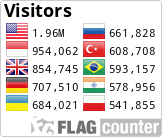After Subsistence Prosperity: Food Security Challenges for Residents in Remote Papua
DOI:
https://doi.org/10.59613/global.v1i3.383Keywords:
Prosperity, Papua, Food Security, Remote AreasAbstract
Papua, with its incredible natural wealth and biodiversity, holds great potential to achieve sustainable prosperity. The introduction of this paper highlights the background of the challenges faced by Papua, including food security in remote areas, as well as the research objectives and methodologies used. Subsistence prosperity is the main focus, describing how Papuans live from traditional natural products. However, economic and social changes have shifted this paradigm, bringing significant impacts to life and food security in Papua. The study then evaluates the current state of food security in Papua, identifying key factors that affect access and availability of food in remote areas. Based on these findings, short-term and long-term policy recommendations to improve food security and prosperity in Papua were prepared. These recommendations include strategies to increase local food production, diversify food sources, improve infrastructure, and strengthen the capacity and participation of local communities in resource management. With a holistic approach that involves collaboration between the government, local communities, and the private sector, this research offers sustainable solutions to address food security challenges in Papua. The results of this study are expected to be a guide for stakeholders in formulating policies that support the welfare and prosperity of the Papuan people, especially in remote areas that are vulnerable to food insecurity.
Downloads
Published
How to Cite
Issue
Section
License
Copyright (c) 2023 Agus Sumule, Amestina Matualage

This work is licensed under a Creative Commons Attribution 4.0 International License.














